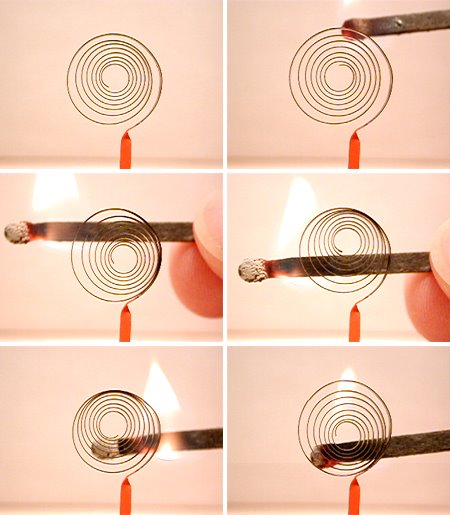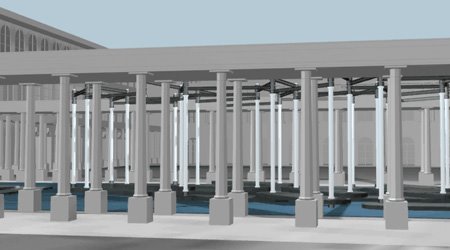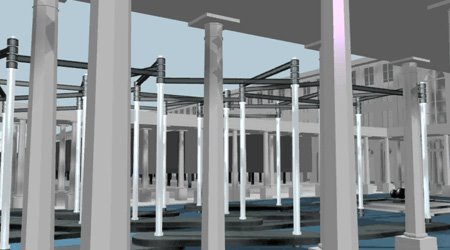“[G]iven that everything is in flux at one or more temporal scales, architecture (including landscape) is either an attempt to portary that flux or to disguise it, hold it at bay, or, as you say, to express some sort of wait/weight.
“So we might consider ways of combining the two, in the same way that a clock expresses seconds, minutes and hours while remaining unchanged over the course of days, months and years. Is there a structure held together by gravity whose segments can be moved around one at a time?” And furthermore, “Are there elements of landscape that can express immediate change while remaining intact over time?”
To which I'll simply offer in response this half-decade-old Princeton thesis project: Sentient Architecture.

In anticipating e-tat's call for structures that are indiscriminately responsive to geophysical stimuli and suffer no structural failure afterwards, David L. Hays proposed a program which “exploits an aspect of structural design that has until now been actively repressed not so much by practical necessity as by a convention of thought in which the material truth of a building is considered secondary to a fixed image of its ideal form. A primary objective of my project is to neglect the singular ideal in favor of a notion of materiality enriched through understanding of natural dynamics (i.e., susception, transduction, and response). While the focus of such a pursuit might seem mundane or even banal, its implications for design are considerable and highly provocative. For example, sentient architecture replaces a rigid ideal of form with an elastic range open to radical transformation and even to deliberate systematic failure. That flexibility alone raises significant questions about how to situate and program a structure the formal states of which are linked to forces over which man has no control (i.e., those of climate). As a practice of design in which boundaries between art and technology are fully dissolved and in which form is both motivated and modified by shifting conditions of environment, sentient architecture conflates concepts of structure and environment that have hitherto been at odds, thereby allowing architecture and landscape to be theorized as a single discipline.”



Sentient Architecture